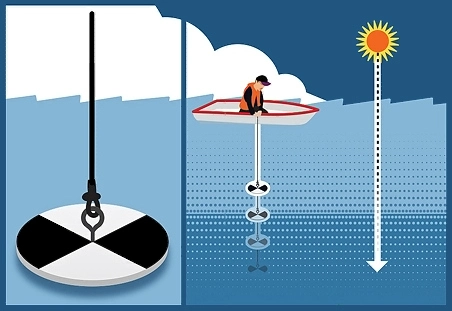The Secchi Disk is a fundamental tool in environmental science and
limnology used to measure water clarity and transparency in bodies
of water, including lakes, rivers, and oceans. It consists of a
circular, flat disk, typically painted with alternating black and
white quadrants, attached to a rope or line. This instrument is
named after Italian priest and scientist Pietro Angelo Secchi, who
developed it in the mid-19th century.
To use the Secchi Disk, it is lowered vertically into the water
until it disappears from view. The depth at which it vanishes, known
as the Secchi depth, is then recorded. This measurement provides
valuable insights into the quality of the water and the degree to
which light can penetrate through the water column. A shallower
Secchi depth usually indicates clearer, less turbid water with
greater transparency, while a deeper Secchi depth suggests murkier
or more turbid conditions with reduced visibility.
Scientists, environmentalists, and researchers commonly employ the
Secchi Disk as a cost-effective and straightforward method to assess
water quality, monitor changes in aquatic ecosystems, and study the
impact of pollutants or sedimentation. It plays a crucial role in
understanding the health of aquatic environments and is often
integrated into broader water quality monitoring programs.
Additionally, citizen scientists and volunteers frequently use
Secchi Disks, contributing to community-driven efforts to protect
and preserve water resources.







